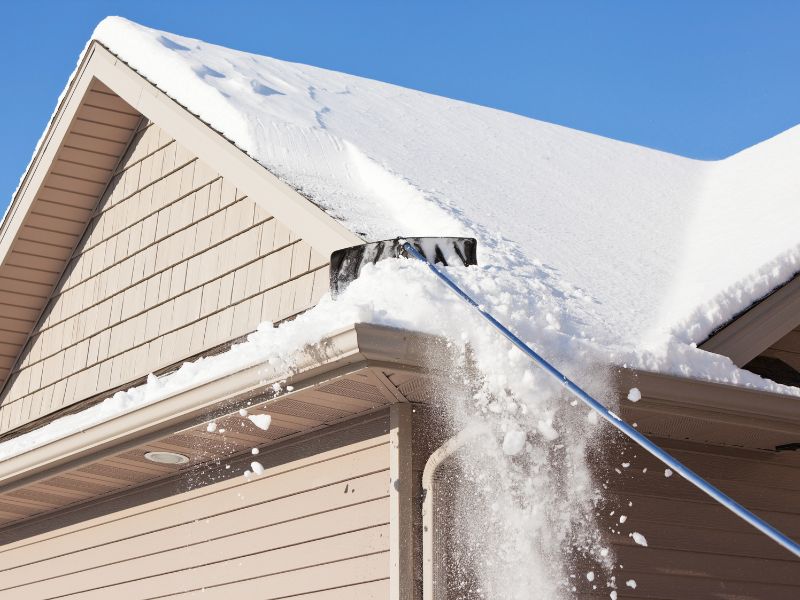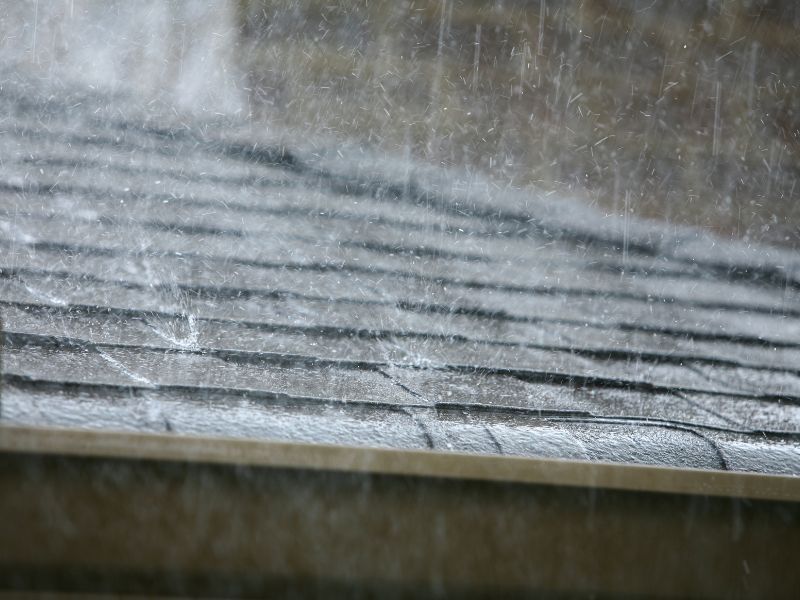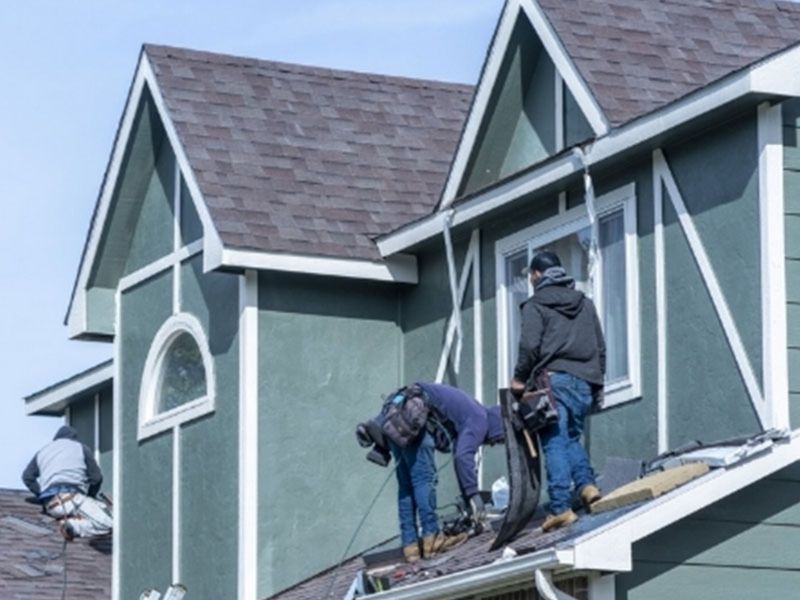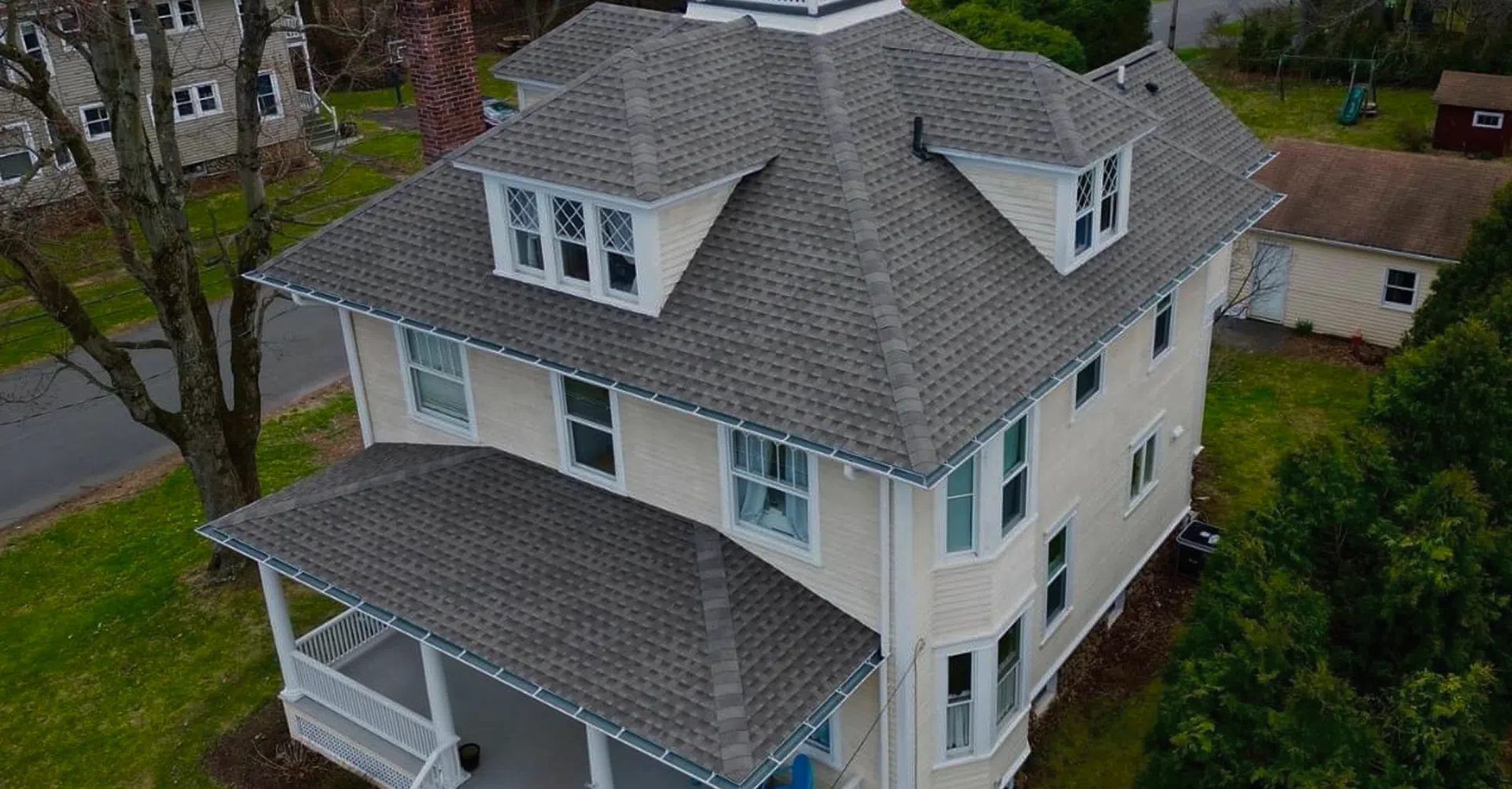Discover the Signs it's Time to Replace your Home's Roof If you’re starting to worry…
Yes: Roof Replacement Can be Carried out During Winter or the Rainy Season with Proper Planning and Materials

When your roof is leaking or near the end of its lifespan, waiting for “perfect” weather can feel risky—the good news is that with the right planning, a total roof replacement can successfully be performed during winter and rainy seasons.
Hiring an experienced roofing contractor who knows the proper conditions for planning roof replacement services around safe weather windows is essential to a successful project. When your roofer ensures materials are installed with cold- or wet-weather best practices—safeguards that protect your future roof—it makes roof replacement reliable any time of year.
Seasonal Impacts On Roof Replacement
You don’t need perfect weather to replace a roof—you need a smart plan. In colder months, the work shifts to the warmest part of the day and materials are kept comfortable so they install correctly. During rainy stretches, roof replacement contractors open only small sections at a time and cover each area right away so your home stays protected throughout the project.
Winter Roof Replacements
Cold air can make shingles a little stiffer, so roofers handle them gently and keep bundles warm until they’re needed. Teams often focus work during mid-day, when temperatures are highest, so cuts are cleaner and nails set just right. Key edges and corners may be hand-sealed so everything stays put until the next sunny spell finishes the bond. With these simple adjustments, a winter roof can be installed to manufacturer standards and backed by warranty.
Rainy Season Roof Replacements
Rainy periods call for smaller, well-timed steps. The roofing contractors remove the old roof in manageable sections, then immediately cover each area with protective underlayment so no bare wood is left exposed. Forecasts and radar are watched closely; if a shower moves in, the roof is already “dried-in,” and work pauses until it’s safe to continue. This sectional approach keeps the home watertight from start to finish while progress continues on a reliable schedule.
When Winter Roof Replacement Makes Sense
If your roof is leaking, significantly aged, or storm-damaged, waiting months can increase interior repair costs. Winter slots can also open sooner on the calendar, helping you address issues before they compound. With cold-weather methods and material handling, a winter replacement can be both practical and cost-smart.
Temperature and Material Considerations
Asphalt shingles get stiffer in low temperatures, and many sealants have a minimum activation threshold. To offset this, installers store shingles and sealants warm, cut bundles only as needed, and favor mid-day installation when surfaces are at their highest temperature.
These details help the roofing system seat properly and prevent tab lift or blow-offs.
Adhesion and Hand-Sealing
Factory seal strips may not bond immediately in cold air, particularly on shaded slopes. Professional roofing teams spot-hand-seal hips, rakes, valleys, and windward edges using manufacturer-approved adhesives. This adds mechanical security while you wait for a sunny stretch to activate full seals.
The approach preserves appearance and performance without relying solely on ambient heat.
Safety, Daylight, and Production Rates
Shorter days and potentially slick surfaces require extra planning. Roofing technicians emphasize traction, housekeeping, and harness use, often staging materials where footing is most secure. Production pacing may adjust slightly to prioritize safe movement and precise detailing.
The result is steady progress with careful quality control at each step.
Scheduling and Homeowner Advantages
Winter is typically an off-peak season for roofing companies, which can translate to faster start dates. Addressing problems now can prevent insulation damage, drywall repairs, and mold remediation that often follow recurring leaks.
For roofs at end-of-life, a timely winter roof replacement often costs less than a season of emergency roof repairs.
Proper Rainy Season Roof Replacement Practices
Rain doesn’t automatically cancel a roofing project—it reshapes how the work is planned. The goal is to protect the structure hour-to-hour while steadily advancing the installation process. With sectional tear-off, immediate dry-in, and vigilant forecasting, your home remains covered.

Weather Windows and Forecasting
Experienced roof replacement teams treat the forecast like a critical tool. They plan tear-off during stable windows, keep protective materials on hand, and track radar throughout the day. If showers approach, on-site crews pause, secure the work, and resume only when the deck can remain dry.
This rhythm ensures your total roofing system is never compromised by active rain.
Tear-Off, Staging, and Dry-In Protocols
Old roofing materials are removed in small zones that can be fully dried-in the same day. Ice/water shield and synthetic underlayment are installed immediately, followed by key flashings and starter courses as conditions allow. Skilled roofing contractors stage materials close to each zone to shorten the time between tear-off and coverage.
This sectional method of the roofing process keeps your home protected while progress continues.
Moisture Checks and Ventilation
Before new materials go down, the roof’s decking materials should be sound and dry. Roofers replace soft or delaminated areas, then confirm a clear path for intake and exhaust ventilation. Balanced ventilation helps manage seasonal humidity, minimizes condensation risk, and supports shingle longevity.
In rainy climates, this “airflow first” mindset pays dividends year-round.
What Homeowners Should Expect During Off-Season Roofing
The experience of hiring roofers during winter or rainy season is similar to peak season services, only with more weather-aware planning. Expect clear communication about timing, daily startup decisions based on current conditions, and a meticulous focus on keeping the home sealed.
These controls safeguard your property while keeping the project moving:

- Weather-Aware Planning: Your roofers align start times with temperature and precipitation windows to protect the deck and improve workmanship.
- Sectional Tear-Off: Only the area that can be dried-in the same day is opened, minimizing exposure at every moment.
- Material Conditioning: Shingles and sealants are kept within optimal temperature ranges so they cut cleanly and bond consistently.
- Extra Quality Checks: Nailing patterns, flashing transitions, and edges receive added inspection to ensure long-term performance.
Signs You Shouldn’t Wait Till Spring to Get Your Roof Replaced
Delaying a failing roof can amplify costs inside the home. If you recognize these issues, an off-season roof replacement is often the smarter financial choice:
- Active Leaks: Water stains, ceiling bubbles, or attic drips signal that underlayment and decking are compromised and need timely attention.
- Curling Or Missing Shingles: Gaps and lifted tabs invite wind-driven rain under the surface, accelerating deterioration of the roof deck.
- Soft Or Spongy Decking: Give underfoot areas a professional assessment before winter storms or long rainy stretches worsen the damage.
- Failing Flashings: Chimney, skylight, and wall step flashings deteriorate faster in harsh weather and should be replaced as part of a system upgrade.
Common Questions About Winter Roof Replacement
Will my shingles seal in cold weather?
Yes. Seal strips typically bond during a later warm spell, and roofing pros hand-seal critical edges to hold tabs until that happens. With correct nailing and storage, your system performs as intended while temperatures fluctuate.
Can my roof be replaced if a storm is approaching?
Yes—with limits. If a storm is close enough to bring rain, lightning, or high winds during your scheduled window, a professional roofing team will either work in small sections they can “dry-in” the same day, or pause and reschedule to avoid exposing your home. The roof should never be left open to active precipitation nor should the services compromise the safety of workers.
Is a roof replacement more expensive during the off-season?
Not necessarily. Pricing depends on scope, materials, access, and timing. The greater expense often comes from waiting—interior roof repairs and repeated patches can add up quickly.
Plan Your Weather-Smart Roof Replacement with Seci Construction, Inc.
If you are wondering whether to move forward with your full roof replacement during winter or a rainy stretch, our experts at Seci Construction Inc. can help you make a safely-timed plan. Our team will inspect your roof, identify any urgent risks, and outline a step-by-step approach—whether that’s a targeted roof repair to buy time or a complete roof replacement scheduled around reliable weather windows.
To schedule a roof inspection or get a FREE estimate on roofing services in New Jersey, New York, Connecticut, and Pennsylvania, contact us today by calling 866-572-7324 or filling out our online contact form.


